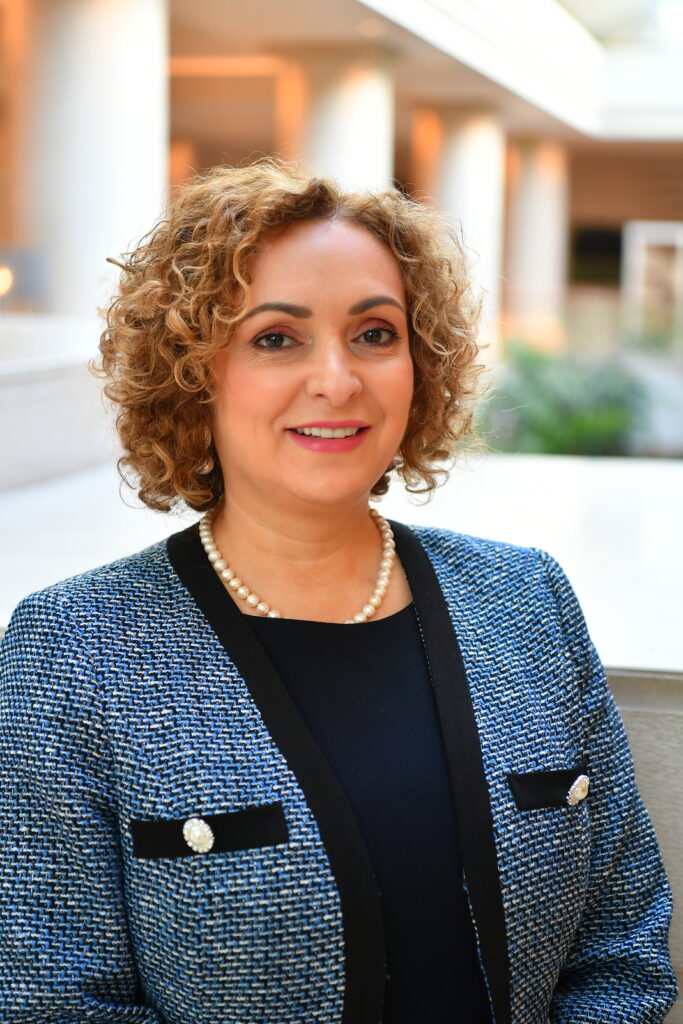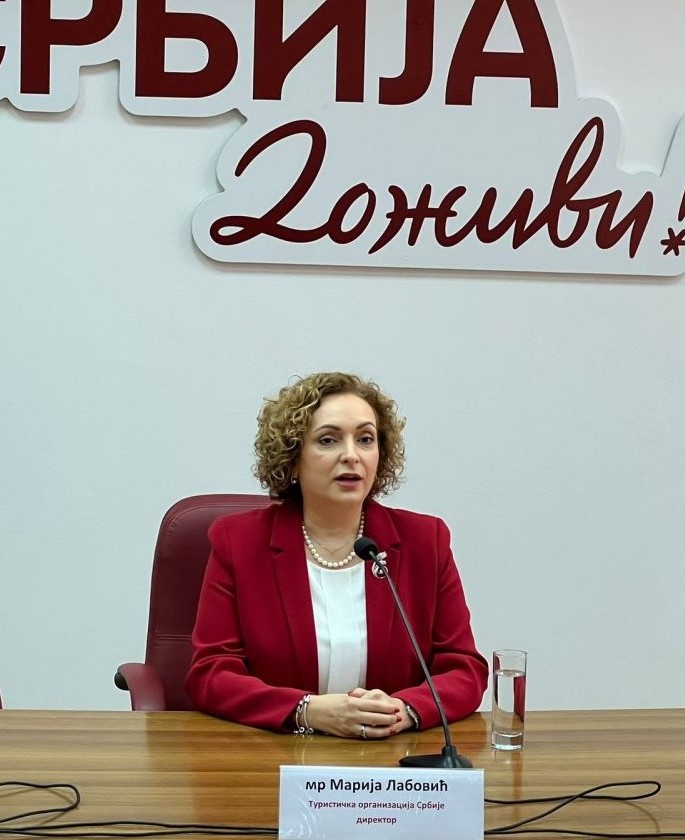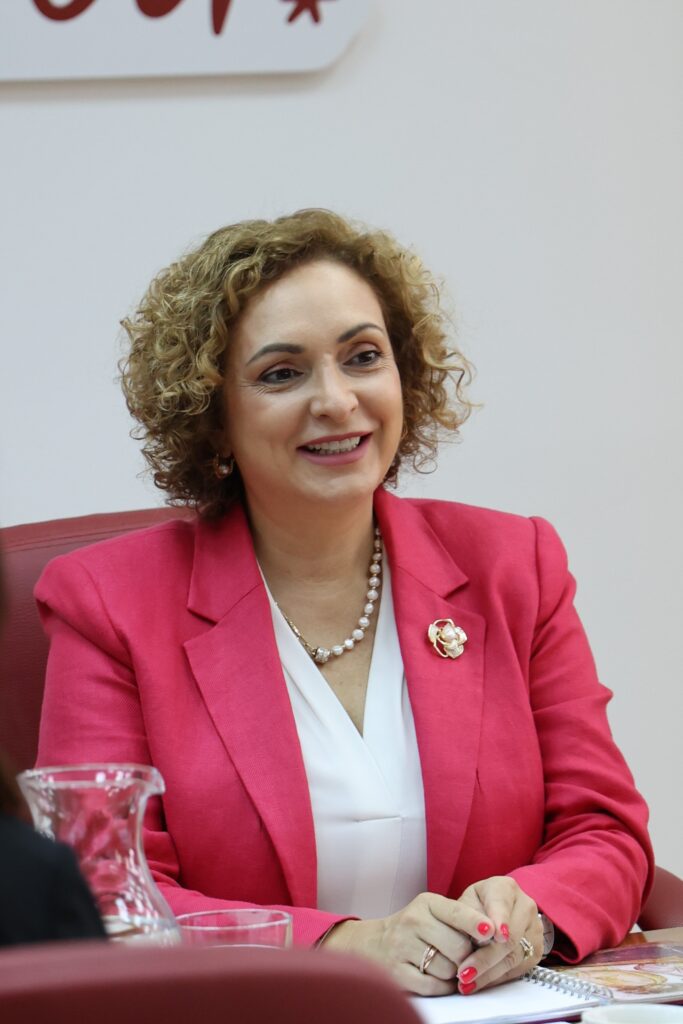From infrastructure to sustainability, Serbia must innovate and adapt to remain competitive in the global conference tourism market
 Welcome to our special edition on Congress Tourism! We are thrilled to have with us Marija Labović, the director of the Tourism Organisation of Serbia. With her extensive experience in promoting Serbia as a premier destination for business events and congresses, Marija has played a pivotal role in shaping the country’s tourism strategy.
Welcome to our special edition on Congress Tourism! We are thrilled to have with us Marija Labović, the director of the Tourism Organisation of Serbia. With her extensive experience in promoting Serbia as a premier destination for business events and congresses, Marija has played a pivotal role in shaping the country’s tourism strategy.
In this interview, we will explore the unique offerings of Serbia in the realm of congress tourism, the challenges and opportunities in the current landscape, and the innovative initiatives being implemented to attract international events. Join us as we dive into the insights and vision of a leader dedicated to elevating Serbia’s status on the global tourism map.
To begin with, I would like us to recall the golden age of Belgrade when it comes to conference tourism. How did it look back then (in the 1970s and 1980s), and what events marked this period?
During the period you’re referring to, Belgrade hosted numerous significant international events, among which I would particularly highlight the first and ninth conferences of the Non-Aligned Movement, of which Yugoslavia was one of the founders. These events attracted guests from all over the world and solidified Belgrade’s position as a centre of diplomatic activities in this part of the world. This period was characterized by a high frequency of important political, economic, and scientific gatherings, which greatly contributed to Belgrade’s recognition on the world map of major international events.
An increasing number of experts and international organizations recognize Serbia as an attractive destination for specialized conferences and events
Where are we today? Particularly about the surrounding region and some new conference destinations?
Today, Serbia, and especially Belgrade, holds a significant place on the global conference map. Although we face competition from new conference destinations in the region, Serbia continues to attract great attention due to its rich history, strategic location, and relatively affordable prices. Over the past decade, Serbia has significantly improved its infrastructure, with modern spaces suitable for hosting conferences, as well as numerous hotels and conference venues offering high-quality services. The reopening of the renovated Sava Center is also of great importance, providing us with the ability to organize both large and small gatherings efficiently. An increasing number of experts and international organizations recognize Serbia as an attractive destination for specialized conferences and events. A key contribution to the development of conference tourism comes from our prominent experts—professors and engineers—who, through their work and international recognition, manage to attract their colleagues and bring them to Serbia. However, I would like to emphasize that additional efforts are still needed in promotion and development to ensure that Serbia keeps pace with regional competitors and increases its market share.
 Besides Belgrade, Serbia has great potential for the development of conference tourism in other cities. What would you highlight as the most significant?
Besides Belgrade, Serbia has great potential for the development of conference tourism in other cities. What would you highlight as the most significant?
In addition to Belgrade, Serbia has other cities with great potential for the development of conference tourism. I would highlight Novi Sad, which stands out as the second-largest conference centre in the country, thanks to its rich offerings, excellent conference centre, and growing popularity among tourists.
Niš, as the historical and cultural centre of southern Serbia, also has the capacity for organizing conferences, with an attractive offering that includes a rich cultural heritage and proximity to important archaeological sites such as Mediana, Niš Fortress, and the Skull Tower.
I would also mention Zlatibor, Kopaonik, Subotica, and Vrnjačka Banja as attractive and appealing conference destinations. These centres have significant potential to attract small and medium-sized conferences, combining business facilities with opportunities for relaxation and recreation. They represent a unique blend of natural beauty and modern conference services, making them ideal for organizing events in a more relaxed environment.
It should be noted that in addition to Belgrade, other cities recognized as conference destinations are opening their convention bureaus, which, in collaboration with the Serbian Convention Bureau of the Tourist Organization, will work on promoting their destinations. Novi Sad, Niš, and Zlatibor have already made significant progress in this area.
How has the increase in hotel capacities and the arrival of major hotel chains contributed to the development of conference facilities?
The increase in hotel capacities and the arrival of major international hotel chains have significantly contributed to the development of conference facilities in Serbia. New hotels not only offer premium accommodation to their guests but also modern conference halls and accompanying facilities that enable the organization of various types of events, from smaller business meetings to large international conferences. The arrival of well-known chains increases Serbia’s credibility as a conference tourism destination, as famous brands bring international quality standards. Additionally, the increase in hotel capacities allows for the simultaneous hosting of multiple large events, which enhances Serbia’s accessibility and attractiveness in the global conference tourism market.
Modern conference tourism requires much more than basic infrastructure like roads, halls, and a sufficient number of rooms
Do you have data on current results (this or last year)?
Data on the current results of conference tourism in Serbia for this and the previous year indicate a gradual recovery and growth of the sector after the pandemic. According to available reports from the International Congress and Convention Association (ICCA) for 2023, Serbia ranked 52nd with a total of 43 events that meet the association’s criteria, while Belgrade ranked 66th on the list of the most desirable cities in the world for business tourism, with a total of 34 events held. It is important to note that congresses, seminars, and various types of events are held daily in our country, but the International Association only counts congresses that have more than 50 delegates, rotate between at least three countries, and are held continuously, e.g., annually or biannually. The competition is increasing, and we will need to put in a lot of effort to improve our positions in this industry in the coming years. Work on infrastructure and proximity to airports positively influences the growth in the number of conference tourists. Also, statistics show that hotel occupancy rates during international conferences have increased, contributing to overall tourism revenue.
What should we do to improve our country’s position in the conference tourism market and attract major event organizers?
To strengthen Serbia’s position in conference tourism and attract larger event organizers, efforts need to be made on several key fronts. First, continuous improvement of infrastructure is essential, including the modernization of existing conference centres and the construction of new venues that can accommodate larger numbers of participants. Second, stronger promotion of Serbia as a conference destination on international markets is crucial, particularly through presence at global trade fairs, more active digital promotion, and stronger partnerships with national professional associations.
Additionally, it is necessary to enhance cooperation between the government, local authorities, and the private sector to develop attractive packages for event organizers, including tax incentives, subsidies, or other benefits. Investment in education and training of local staff in the conference industry is also vital to ensure high service standards. Finally, improving Serbia’s connectivity with key markets by further enhancing air and transport infrastructure is important to make the destination more accessible to international visitors.
 Times are changing, and so are conferences. What are the modern needs for the development of conference tourism? Are roads, halls, and enough rooms sufficient, or is something else needed now?
Times are changing, and so are conferences. What are the modern needs for the development of conference tourism? Are roads, halls, and enough rooms sufficient, or is something else needed now?
Modern conference tourism requires much more than basic infrastructure like roads, halls, and a sufficient number of rooms. In today’s world, conference organizers and participants expect high-tech support, flexible spaces for various types of events, and customized offerings that cater to the specific needs of different industries.
Technological readiness has become crucial—fast and reliable internet connectivity, the ability to host hybrid events that combine in-person and online participation, and advanced audio-visual technologies are now essential standards. Sustainability is also increasingly important, with organizers seeking environmentally responsible venues and services, which include the use of renewable energy, waste reduction, and the provision of local products and services.
Additionally, services such as personalized participant support, networking opportunities, and accompanying programs that include cultural and recreational activities are becoming more significant. Establishing a conference destination as a place that offers a comprehensive and memorable experience is key to attracting large and prestigious events.
Conference tourism helps reduce seasonality, extending the period during which the destination generates tourism revenue
How significant and stimulating is conference tourism for the standard tourism offering, and how can it boost tourism development in general?
I would like to emphasize that conference tourism positively impacts standard tourism offerings and can be a powerful driver of tourism development overall. First of all, conferences and business events attract a large number of participants who often extend their stay to explore the destination they are visiting. This leads to an increase in hotel stays, visits to local attractions, and higher spending on restaurants, shops, and other services.
It’s especially important to note that conference tourism helps reduce seasonality, as business events often take place outside the peak tourist season, thereby extending the period during which the destination generates tourism revenue. These events also create opportunities for developing specialized services, such as guided tours, themed evenings, or educational workshops, which can become part of the regular tourist offering.
Finally, successfully organized conferences enhance the visibility and reputation of a destination on the international level, attracting new visitors and investments. In this way, conference tourism becomes a catalyst for expanding and improving the overall tourism offering, bringing long-term benefits to the entire local community.